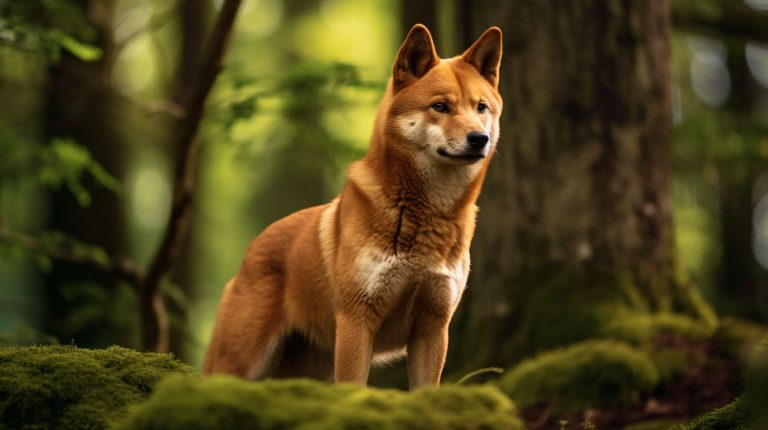Shetland Sheepdog: Small Dog With A Big Heart
Where Do Shetland Sheepdogs Come From?
A dog of the Spitz breed, which is possibly related to the contemporary Icelandic Sheepdog, was the first sheepdog of Shetland. This dog was crossed with working collies from the mainland and brought to the islands. After being brought to England, it underwent extensive breeding with the Rough Collie and other breeds, including some or all of the extinct Greenland Yakki, King Charles Spaniel (not the Cavalier), the Pomeranian, and perhaps the Border Collie.
The Border Collie has taken over the role of the native Spitz-type working sheepdog in Shetland, making it extinct today. Until larger breeds were needed in commercial cattle husbandry, shelties were used for herding.
Although it closely resembles the Collie, the Shetland Sheepdog (Sheltie) is not a smaller version of its larger relative. Instead, it was developed independently using various other dog breeds. The Collie is part of the Shelties’ mix but was included much later in its development. Shelties come from the rugged Shetland Islands.
Unlike Texas, everything is smaller in the Shetlands. Food is sometimes scarce and small animals each less. The Sheltie, Shetland ponies, cattle, sheep, ducks, and geese are small compared to those usually found elsewhere.
 |
 |
 |
The Shetland Sheepdog, also referred to as the Sheltie, is a type of herding dog developed in the Scottish Shetland Islands. Shetland Collie was the breed’s initial name, but because of disagreements it generated with Rough Collie breeders of the time, the name was formally altered.
“Shelties were registered with the Kennel Club in 1909 and the AKC in 1911.
What Does Shetland Sheepdog Look Like?
The Sheltie is a small, 13-16 inches tall, and 15-25 pounds herding dog and is often mistaken for a small Collie. At one time, the Sheltie was called the Shetland Collie, but owners and breeders of the Rough Collie objected, and its name was officially changed to Shetland Sheepdog.
The Shelties have a thick double coat in several colors and markings. Three primary colors are more frequently seen: sable, merle, and tri-color.
 |
 |
 |
Are Shelties Good Family Dogs?
Shelties are loyal, affectionate dogs and make great family pets. They are active, playful, and make excellent playmates. They are excellent watchdogs because they are often wary of strangers. Shelties are not usually aggressive but can be very vocal and bark more than other breeds.
The Shelties are not all play and no rest. They sometimes become a shadow and follow their favorite person whenever and wherever they can. They also love to cuddle and will make a perfect couch partner.
This obedient little dog is intelligent, talkative, excited, and eager to please. Due to their strong ties to family, they are so wonderfully trustworthy to their owners that they are frequently referred to as “shadows.
Do Shelties Shed?
Shelties have thick double-coat hair that they shed all year long, especially during the spring and fall shedding seasons. Weekly brushing will help reduce the amount of hair littered about the house.
They are prone to tangles and mats on certain parts of their bodies, and weekly brushing will also help reduce those problems. However, cutting their hair short is not a good idea as it does not always grow back, and they need hair to protect their skin. They will need an occasional bath.
Are Shelties Easy To Train?
Ranking number 6 in Stanley Coren’s book, “The Intelligence of Dogs, Shelties are one of the most intelligent dog breeds. They are eager to please, and training them is relatively easy.
The Shelties is quick and agile, and these traits, coupled with its high intelligence, make it a dog that excels in competition events. They practically dominate their class size in dog agility, obedience, flyball, and herding.
Are Shelties Healthy?
Shelties are often active and in good condition. Similar to the Rough Collie, there is a propensity for genetic eye illness and deformity. An experienced veterinary ophthalmologist should check the eyes of each puppy. Some lines could be more prone to skin allergies, hip dysplasia, hypothyroidism, or epilepsy.
Shetland Sheepdogs are four times more likely than other dogs to get the bladder malignancy transitional cell carcinoma.
The Sheltie, by and large, is a healthy dog with a few genetic risks. One such risk is the Collie eye anomaly. Most breeders will have their dogs tested for this trait and will not breed those that score too high for passing on the disease.
Where Can I Get A Sheltie?
The American Shetland Sheepdog Association is an excellent place to start your search for a Sheltie. They have an interactive map that will help you find breeders in your state. You may get help from the National Sheltie Rescue Association if you consider a rescue dog.
How much should you expect to pay for a Sheltie puppy? According to prices on PuppySpot, the starting price for a Sheltie begins at $2699 and goes up from there. No doubt there are additional overhead costs for puppies sold this way, and you may find less expensive puppies from local breeders.






